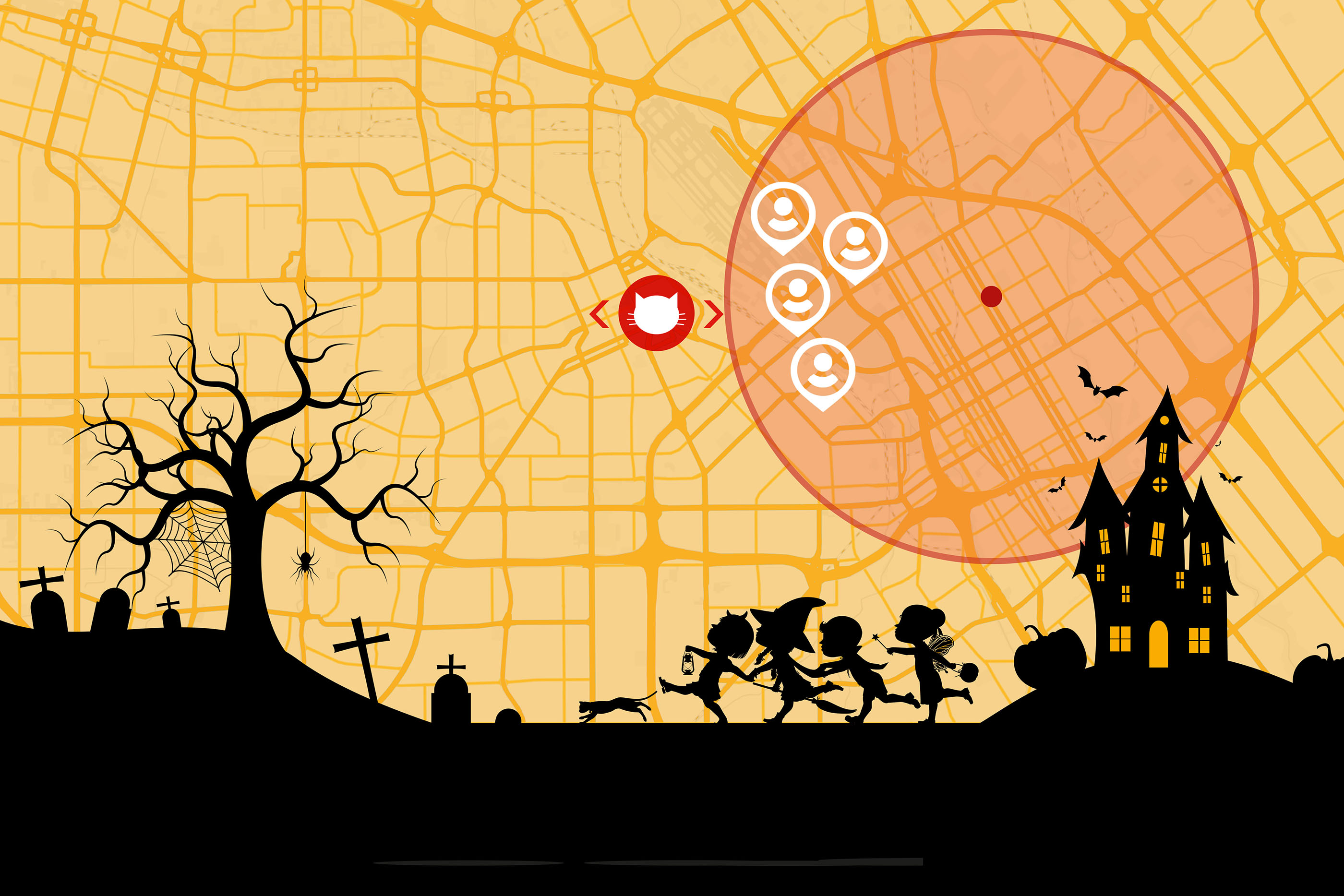Bats, Beasts, and Beacons, oh my! Geofencing and Privacy this Halloween
)

This Halloween, you can create an application that uses data, but doesn’t abuse it, and have fun experimenting with location-based code for a good cause. Let's explore the ethics and use case of using someone else’s location info, and how the Geofencing API can still offer engineers a way to create applications that protect the privacy of all parties.
In this article, we’ll explore the ethics and use case of using someone else’s location info, and how the Geofencing API can still offer engineers a way to create applications that protect the privacy of all parties, the TomTom way.
Ghouls and Tools
Do you allow your spouse or partner to track your location? Your parents? Your extended relatives? Your friends?
Hyperconnectivity has lent a sense of normalcy to the average, median to young-age adult sharing their location with multiple applications and multiple people of varying degrees of personal closeness. (Recall the not-so-distant past of Snapchat effectively mapping your friends and family.)
However, in the midst of all the questioning of who has permission to see what information is yours, it’s easy to forget that one of the main use cases for this “oversharing” of location data has been in the interest of safety.
Acts of violence in the past years – such as incidents in Virginia Beach, Odessa and El Paso – have fueled a growing willingness to appreciate the positive side of this data sharing as a worthy compromise. That’s where TomTom’s Geofencing API comes in.
If you’re a developer, you know that anything (or anyone) connected to the internet and relaying a signal can, in fact be tracked. You also know that there are times when this is a good idea – for example, many people use tracking applications to prevent the loss of high-value items (asset tracking).
A timely use case for geofencing is Halloween. It’s when spook-fans of every age, in many parts of the world, will be up to nighttime shenanigans. Unfortunately, the true creeps of this world don’t rest on October 31st, emphasizing the need for apps which use geofencing so that families can monitor the location of their most important assets, their kids.
What do you mean by fencing?
No, we aren’t painting a fence.
Our Geofencing API enables you to create and customize a bounding box to fit your needs. This involves reporting, a distinct feature to Geofencing. Whenever a geofenced object leaves the bounding box, aka the “fence,” you can generate a report of the object locations whether they’re in the fence or not, or in any other fences that were set up. You can also check if the object entered or exited a fence by storing your object positions in the Location History API and using the Geofencing Transitions feature.
The item that is moving in and out of its designated boundaries can be anything from a large inanimate asset like a truck, tracked in the interest of theft prevention, to a personal object such as a phone, to… a person. Or more accurately, a phone representing the movements of a person in real time.
What Trick is this?

An understandable concern over the idea of constant location updates enters the picture when we start talking about using a child’s phone as an active beacon, potentially available 24/7, 365 days a year.
More specifically, a parent might be concerned about harvesting their child’s data and gifting it to nameless servers, without knowing exactly what information is collected, and for what purpose. This is, again, understandable – children may not be aware of their data collection and ramifications but are treated essentially as equal individuals under GDPR.
How could parents alleviate safety concerns, while doing the right thing in regard to their child’s data?
TomTom’s Geofencing API puts what data is used for your application’s actions, and how much, under full control of the developer. This means that the developer can opt to completely anonymize data and retain only what basic location points are necessary to perform desired actions.
No Spooks
This is important for a few reasons – one of the most important being that in this time of ethical data firestorms, developers are our catalysts for change. Only they know, at the code level, what data about users is retained vs. what is necessary for the application to operate to its standards. Thus, the final decision of what data is processed, anonymously or not, lies with the person who built the application itself.
For those interested in creating an application that protects children by making sure their guardians can see their location, this means that you can do so on your own terms. As location data can be anonymized at the API level, it means that TomTom never sees personal information of those utilizing the tool; the information is simply never included in processed data.
If you have any Spooktacular code creations this spooky season, tag our developer evangelists on Twitter! Find us at @ovahsen and @JJ_R_Ealo -- We’d love to see what you build.
Interested in learning more about our Geofencing API? Check out these additional resources: